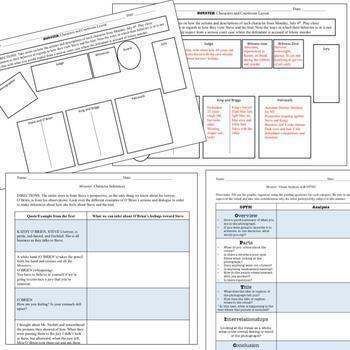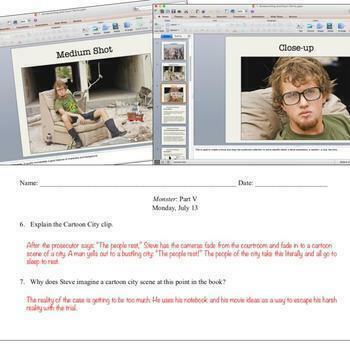Monster by Walter Dean Myers: Novel Resources
- Google Drive™ folder

What educators are saying
Description
Resources to use when teaching Monster by Walter Dean Myers to high school students.
UPDATED: I have converted each PDF document into a Google Drive document for students to complete for distance learning. Students will need to create text boxes on some of the organizers to input information. These files can be printed for paper copies making this a digital/paper resource depending on your needs..
Monster is a unique book and there are many different approaches you can use when teaching it to high school students. This is a collection of resources to use throughout a unit. It is designed so that you can pick and choose which ones will work best for your students and your classroom needs. Below are some suggestions for how and when to use each resource. They are listed in the order I would generally use them with my students.
Monster Screenwriting and Courtroom Terms: This is a quick worksheet where students can take notes on the different terms that will come up in the first part of the novel. There is a PowerPoint to use to go over each term with the class, or you can have your students look online for each definition. I included a link to a theater group’s trailer for the text. It uses close-ups and middle shots, and it is a great introduction to the main character and what they are about to read.
Chapter Guide Questions: Created to get students thinking beyond what is written in the text. The book itself is not broken up in chapters, so most of the guide questions are divided by dates. The questions are divided into nine different parts, but they can be combined or divided again as needed for the class.
Courtroom Graphic Organizer: I use this in the first section to help students visualize the setting of text and to organize information on each of the characters and how they are involved in the case.
OPTIC Visual Analysis worksheet: for students to complete with the picture on page 56 (the second section of the book). It is the only full-page photo of a young man in a jail cell with the door open. Students will analyze the visual using the graphic organizer and the information from the text from that section. If there is time, have students discuss why the author included pictures and why this one was placed in this specific spot in the text.
OPTIC worksheet for visual analysis of one of the photographs in the text. It's blank, so it can be used for any of the visuals, but the answers are provided for one visual in particular. This helps students analyze the visual and its relationship to what is happening in the text.
Internal Conflict and Making Inferences: Graphic organizer to help understand the complex relationship between Steve and his lawyer, O'Brien. Students make inferences about how O'Brien feels towards Steve throughout the trial. Students analyze her internal conflict about defending a man she believes is guilty.
Theme: Students gather examples of identity throughout the text in order to identify the theme of the text. There is a link and accompanying questions for a Ted Talk about how your worst deeds don't define you. Students will find similarities between the two and use information from the talk to understand what Steve needs to do in order to move on after his trial.
Reliable and Unreliable Narrator: Steve is both brutally honest about his fears and general thoughts in jail, but he also lies a bit. Students will either gather their own quotes or use the quotes provided (both forms of worksheets are included) in order to determine how credible Steve is as a narrator. There is a Prezi on narrators and a worksheet for students to take notes about each type of narrator. The Prezi is available for free online and is not included in the price of this product.
Looking to use the movie with the text? Check out my movie guide!





